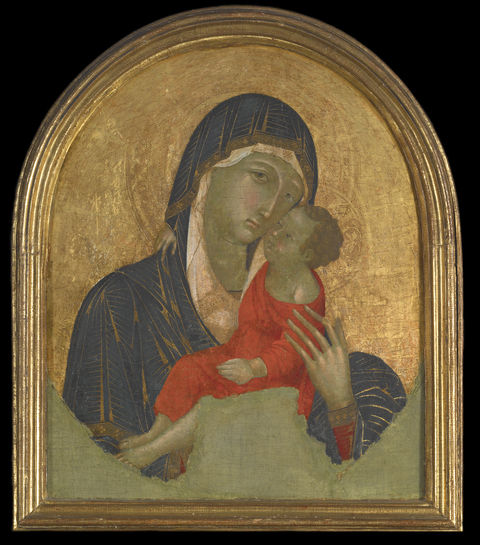Marks, Inscriptions, and Distinguishing Features
None
Entry
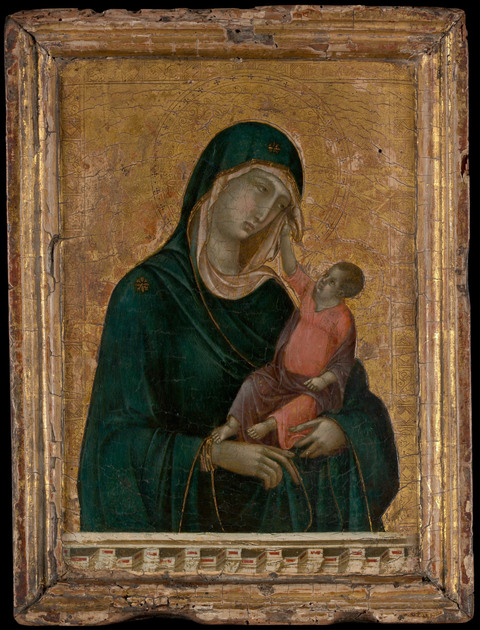
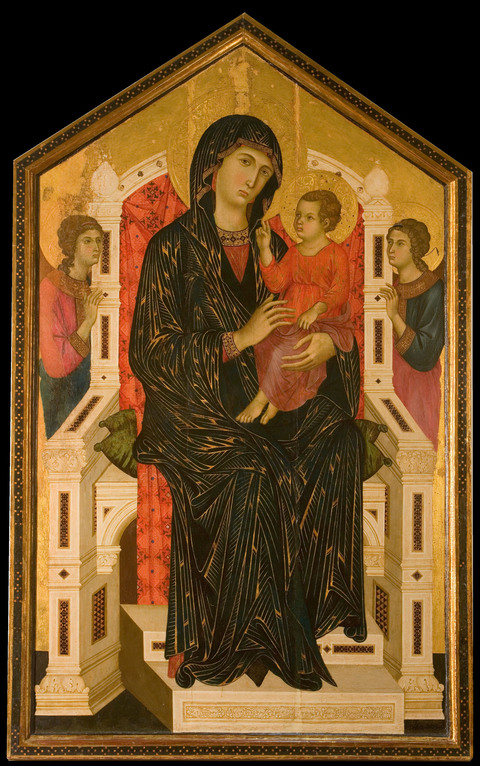
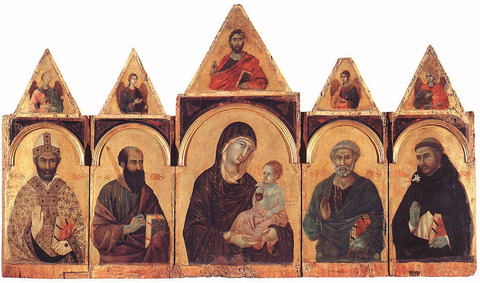

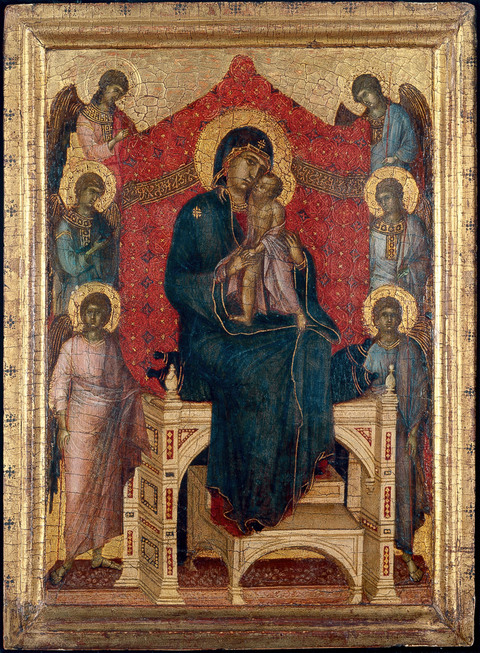
Author
Provenance
Possibly Francis V, Duke of Modena (1819–1875);30
Archduke Franz Ferdinand d’Este (1863–1914), Konopiště Castle near Prague, today Czech Republic, probably by 1914.31
Count Sighard von Enzenberg, Schloss Tratzberg, Austria.32
(E. and A. Silberman Galleries, New York) in, or by, 1935;
Dr. George Henry Alexander Clowes, Indianapolis, in 1935;33
The Clowes Fund, Indianapolis, from 1958–2009, and on long-term loan to the Indianapolis Museum of Art since 1971 (C10031);
Given to the Indianapolis Museum of Art, now the Indianapolis Museum of Art at Newfields, in 2009.
Exhibitions
E. and A. Silberman Galleries, New York, 1957, Art of the United Nations, no. 1 (reproduced);
John Herron Art Museum, Indianapolis, 1959, Paintings from the Collection of George Henry Alexander Clowes: A Memorial Exhibition, no. 21 (reproduced);
The Art Gallery, University of Notre Dame, Notre Dame, IN, 1962, A Lenten Exhibition, no. 14;
Indiana University Art Museum, Bloomington, 1962, Italian and Spanish Paintings from the Clowes Collection, no. 1.
References
Raimond van Marle, “Two Unknown Paintings by Duccio di Buoninsegna,” Apollo 24 (October 1936): 213–214, figs. III–IV;
Hilde Weigelt, “Madonna mit Kind von Segna de Bonaventura,” Pantheon 18 (1936): 258;
Art of the United Nations, exh. cat. (New York: E. and A. Silberman Galleries, 1957), no. 1;
Paintings from the Collection of George Henry Alexander Clowes, exh. cat. (Indianapolis: John Herron Art Museum, 1959), no. 21;
A Lenten Exhibition, exh. cat. (Notre Dame, IN: University of Notre Dame Art Gallery, 1962), no. 14;
Italian and Spanish Paintings from the Clowes Collection, exh. cat. (Bloomington: Indiana University Art Museum, 1962), no. 1;
Mark Roskill, “Clowes Collection Catalogue” (unpublished typed manuscript, IMA Clowes Archive, Indianapolis Museum of Art, Indianapolis, IN, 1968);
A. Ian Fraser, A Catalogue of the Clowes Collection (Indianapolis: Indianapolis Museum of Art, 1972), 2–3;
James H. Stubblebine, Duccio di Buoninsegna and His School, 2 vols. (Princeton, NJ: Princeton University Press, 1979), 1:83, 2: fig. 180.
Notes
-
To put the importance of Duccio’s revolutionary approach into perspective, the Metropolitan Museum of Art in New York acquired the Stoclet Madonna in 2004 at the highest price it had ever paid for a work of art, because it was a universally accepted piece by the master, and the collection had no signal work by that artist. ↩︎
-
Dillian Gordon, s.v. “Duccio,” Dictionary of Art, Grove Art Online, http://www.oxfordartonline.com. ↩︎
-
Letter from William Suida, 26 September 1935, File C10031, Clowes Registration Archive, Indianapolis Museum of Art at Newfields. ↩︎
-
Letter from Giuseppe Fiocco, October 1935, declaring the panel exceptional for its dramatic intensity. File C10031, Clowes Registration Archive, Indianapolis Museum of Art at Newfields. ↩︎
-
Raimond van Marle, File C10031, Clowes Registration Archive, Indianapolis Museum of Art at Newfields. ↩︎
-
Letter from Osvald Siren, 26 November 1935, File C10031, Clowes Registration Archive, Indianapolis Museum of Art at Newfields. ↩︎
-
Robert Harshe, File C10031, Clowes Registration Archive, Indianapolis Museum of Art at Newfields. ↩︎
-
Raimond van Marle, “Two Unknown Paintings by Duccio di Buoninsegna,” Apollo 24 (October 1936): 214. ↩︎
-
Hilde Weigelt, “Madonna mit Kind von Segna de Bonaventura,” Pantheon 18 (1936): 258. ↩︎
-
William Suida, sometime shortly after April 1939, File C10031, Clowes Registration Archive, Indianapolis Museum of Art at Newfields. ↩︎
-
Allen W. Clowes, “The Attribution of Two Italian Paintings,” April 1939, p. 28, unpublished manuscript, File C10031, Clowes Registration Archive, Indianapolis Museum of Art at Newfields. ↩︎
-
Gertrude Coor, “A Further Addition to the Oeuvre of the Badia a Isola Master,” unpublished manuscript, File CL10031, Clowes Registration Archive, Indianapolis Museum of Art at Newfields, and Gertrude Coor, “The Missing Panel from a Dispersed Polyptych by the Badia a Isola Master,” Art Bulletin 38 (1956): 119n3. ↩︎
-
Gertrude Coor, “A Further Addition to the Oeuvre of the Badia a Isola Master,” unpublished manuscript, File C10031, Clowes Registration Archive, Indianapolis Museum of Art at Newfields, 4–5, suggests the Clowes panel is the central part of a lost altarpiece. She tentatively connects this panel with Siena Pinacoteca polyptych laterals no. 22 of Sts. John the Baptist and Peter, with angels in pinnacles, but the condition of the panels prevented Coor from making a definitive declaration (p. 7n12). ↩︎
-
Gertrude Coor and G.H.A. Clowes, File C10031, Clowes Registration Archive, Indianapolis Museum of Art at Newfields. ↩︎
-
Gertrude Coor and Allen Clowes, File C10031, Clowes Registration Archive, Indianapolis Museum of Art at Newfields. ↩︎
-
James Stubblebine, Duccio di Buoninsegna and His School, 2 vols. (Princeton, NJ: Princeton University Press, 1979), 1:83, 2: fig. 180. ↩︎
-
Mark Roskill, “Clowes Collection Catalogue” (unpublished typed manuscript, IMA Clowes Archive, Indianapolis, IN, 1968), Duccio di Buoninsegna—Sienese school, 2009.52. ↩︎
-
A. Ian Fraser, A Catalogue of the Clowes Collection (Indianapolis: Indianapolis Museum of Art, 1972), 2. ↩︎
-
Alessandro Bagnoli, ed., Duccio: Alle origini della pittura senese (Milan: Silvana Editoriale, 2003), 279–285. ↩︎
-
Hilde Weigelt, “Madonna mit Kind von Segna di Buonaventura,” Pantheon 17 (1936): 258. ↩︎
-
Hans Belting, Likeness and Presence: A History of the Image before the Era of Art, trans. E. Jephcott (Chicago: Chicago University Press, 1994), 370. ↩︎
-
Studies of Giovanni Pisano regularly point out parallels of his works with sculptures found on the French Cathedrals of Laon and Reims and with French ivories. Two major periods of documentary silence in Giovanni’s career have led to speculations on northern sojourns, but Giovanni could have also gained a great deal of knowledge of Northern Gothic practice from the importation of ivories, sculptures in precious metals, illuminated manuscripts, and drawings from the North. See John White, Art and Architecture in Italy, 1250–1400, 2nd ed. (Harmondsworth, Middlesex, England: Penguin Books, 1987), 132–133. ↩︎
-
The mendicants, especially the Dominicans, founded by Dominic de Guzmán (1170–1221), and the Franciscans, founded by Francis of Assisi (1181/1182–1226), pushed for making the teachings of the Church accessible and relevant to all members of society, especially the uneducated and poor. Alongside charitable activities for the orphaned, the sick, and the needy, mendicants commissioned artworks and produced treatises, manuals, and edifying exempla aimed at strengthening the faith of the lay parishioner. Jacopus de Voragine’s immensely popular collection of saints' lives, the Legenda Aurea (Golden Legend) of 1260, and Jacopo Passavanti’s 1354 Lo specchio di vera penitenza (The Mirror of True Penance) are two influential Dominican productions. The Meditationes Vitae Christi (Meditations on the Life of Christ) is an early thirteenth-century Franciscan work of unknown authorship that survives in more than 200 thirteenth- to fourteenth-century manuscripts, underscoring its popularity. See Maiju Lehmijoki-Gardner, “Dominican Order” in Christopher Kleinhenz, ed., Medieval Italy, an Encyclopedia (New York: Routledge, 2004), 1:303–305, and Meditations on the Life of Christ: An Illustrated Manuscript of the Fourteenth Century, trans. Isa Ragusa (Princeton, NJ: Princeton University Press, 1977). ↩︎
-
Meditations on the Life of Christ: An Illustrated Manuscript of the Fourteenth Century, trans. Isa Ragusa (Princeton, NJ: Princeton University Press, 1977), 38. ↩︎
-
While references to the Virgin Eleousa can be found in contemporaneous Byzantine treatises, later, post-Byzantine scholarship further defined the category Glykophilousa—“of the sweet kiss”—within the Eleousa type. See Nancy Patterson Ševčenko, “Virgin Eleousa,” Oxford Dictionary of Byzantium (Oxford: Oxford University Press, 1991), 3:2171, and discussions of the Virgin Eleousa in Helen C. Evans, ed., Byzantium: Faith and Power (1261–1557) (New Haven, CT: Yale University Press, 2004). ↩︎
-
See Hans Belting, Likeness and Presence: A History of the Image Before the Era of Art, trans. by Edmund Jephcott (Chicago: University of Chicago Press, 1996); Helen C. Evans, ed., Byzantium: Faith and Power (1261–1557) (New Haven: Yale University Press, 2004), especially Evelina K. Guseva, 166–167; and Rebecca W. Corrie, “Coppo di Marcovaldo’s Madonna del bordone and the Meaning of the Bare-Legged Christ Child in Siena and the East,” Gesta 35, no. 1 (1996): 43–65. ↩︎
-
Examples are seen in the Deposition from Coppo di Marcovaldo and his son Salerno’s Crucifixion with Scenes of Christ’s Passion, Pistoia Cathedral, 1274–76; The Master of Faenza Deposition in the Pinacoteca Nazionale in Bologna, about 1275; and the Master of Saint Francis Deposition from his Double-Sided Polyptych of about 1272 in the Pinacoteca Nazionale dell’Umbria in Perugia. ↩︎
-
See, for example, the Madonna and Child from Segna da Bonaventura’s Polyptych of Saint Agatha, Museo di Palazzo Corboli, Asciano, Italy; a Madonna and Child in the Minneapolis Institute of Art; a Madonna and Child in the Museo Civico e d'Arte Sacra di Colle di Val d'Elsa, Italy; and a Madonna and Child in Wawel Castle, Poland. Other works by Segna feature a similar red robed Christ child held by a Madonna lacking the older style chrysography (e.g., the Madonna and Child, Yale University Art Gallery; Madonna and Child, Honolulu Museum of Art; and Madonna and Child, North Carolina Museum of Art). ↩︎
-
“It is a mistake to pretend that what we call ‘an original by Duccio’ should be painted exclusively by his own hand. Such a concept contradicts the working system of that as well as of many other periods. It goes without mentioning that everyone, especially of the larger works of a master like Duccio, is actually the product of a cooperation of several people, not only the gilder and leading master.” W. Suida, letter of assessment of Clowes panel, undated (shortly after April 1939), p. 2, File C10031, Clowes Registration Archive, Indianapolis Museum of Art at Newfields. ↩︎
-
Tentative indications suggest that this work may have been part of a group of “23 quadri di pittura greca” that were displayed in the Chiesetta of the Castello del Catajo at Battaglia Terme, near Padua, belonging to Francis V, who willed his entire estate to his cousin, Archduke Franz Ferdinand of Austria. See Luigi Rizzoli, “Il Castello del Catajo nel Padovano e il testament del Marchese Tommaso degli Obizzi,” Archivio Veneto-Tridentino, 4 (1923): 7–8, 127–146, 138n1, citing Document IV in the appendix. ↩︎
-
This information is included in Art Unites Nations, exh. cat. (New York: E. and A. Silberman Galleries, 1957), no. 1 (reproduced). Correspondence with Franz Ferdinand’s heirs in 2009 notes that, following the monarchy’s collapse, items from the archduke’s collection may have been sold to support his children; see correspondence in IMA Provenance File (2009.52). ↩︎
-
See Paintings from the Collection of George Henry Alexander Clowes: A Memorial Exhibition, exh. cat. (Indianapolis: John Herron Art Museum, 1959), cat. no. 2 (reproduced). It is identified as having been in the von Enzenberg collection by Hilde Weigelt, “Madonna mit Kind von Segna de Bonaventura,” Pantheon 18 (1936): 258 (reproduced). ↩︎
-
Expertises by several art historians were issued in fall 1935; see File C10031 (2009.52), Clowes Registration Archive, Indianapolis Museum of Art at Newfields. Dr. Clowes was complimented on his purchase by the Director of the Art Institute of Chicago in December 1935; see letter from Robert Harsche to G.H.A. Clowes, December 1935, File C10031 (2009.52), Clowes Registration Archive, Indianapolis Museum of Art at Newfields. ↩︎
